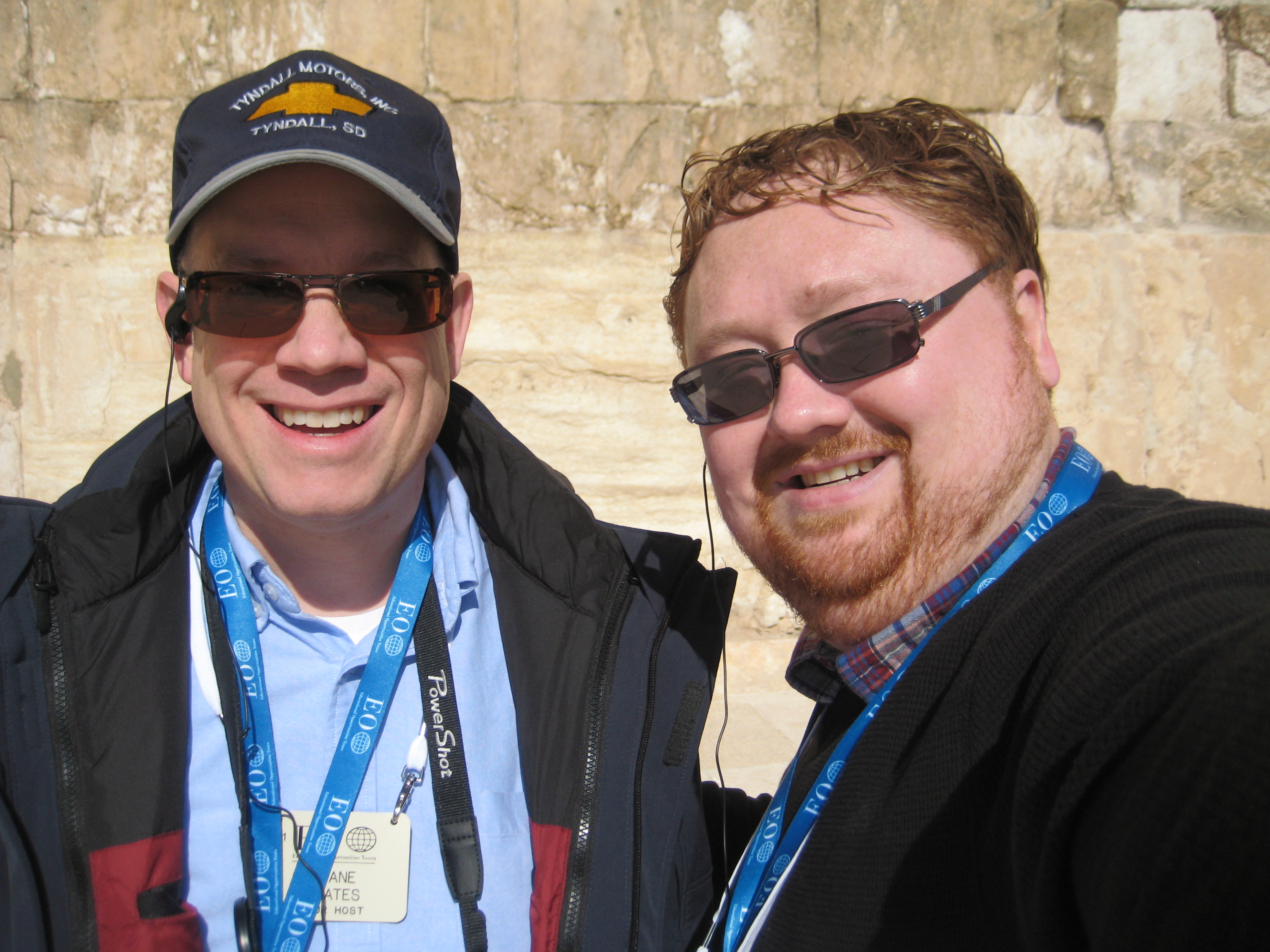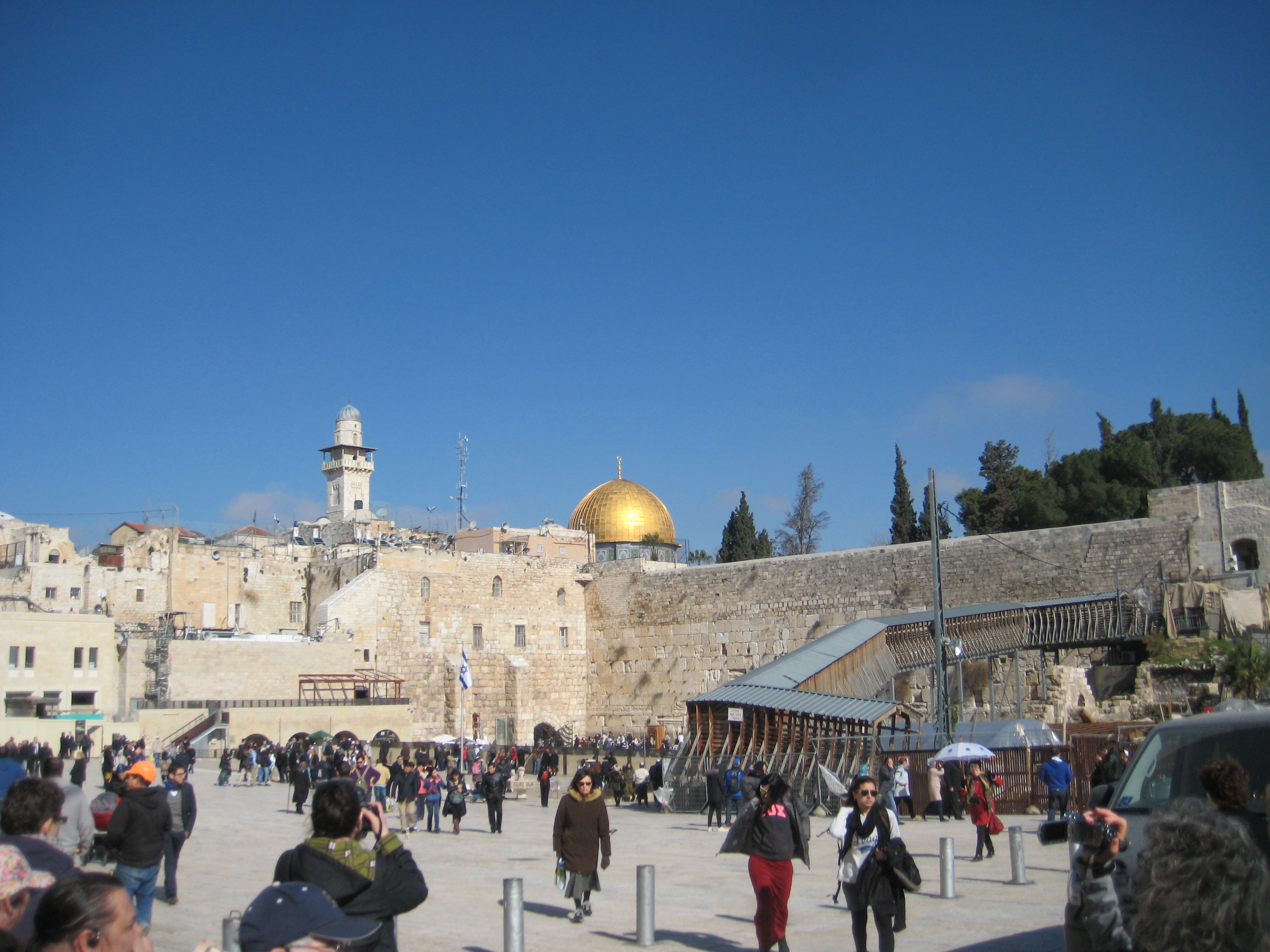Hello, dear reader. Today’s travelogue takes us to Jerusalem for another full day of touring. We went to at least one place most all of you know, but perhaps not by the name preferred by the local people. Also, for Part II, I have some thoughts on tradition vs. history, and a new perspective on Psalm 88. Oh, and I saw hell. Literally. Enough to tantalize? Here’s Day 6, Part I…
Hope Sprouts from the Roots of Children
Before heading to Jerusalem, we made one more stop in the Bethlehem area at Hope School, a private charter school for boys and girls in elementary school through 10th grade. It’s a school that works with children and teens who have had challenges in other schools. Perhaps they had academic challenges because of an undocumented learning disability or were forced to leave due to behavioral or emotional issues. This school takes in all of those children and offers them the chance to learn in a new and safe environment.

The school has gone through a lot of changes in just the last year. With a new president, Dr. Jihan, who has her MA in Speech Therapy and PhD in Mental Health, they’ve instigated a new parent accountability and involvement component, new strategic goals for academics and administrative structure, and are on their way to improving sustainability (step one: a 2,100 chicken egg-laying farm!). The rehabilitation work for the students sounds incredible and the devotion to these young men and women sounds like the Hope School is well-named.


I appreciate that the school works with helping students mediate their own issues and to do so peacefully. This is an important value to foster and expect in a school in the Bethlehem area that is 70% Christian and 30% Muslim students. While founded on Christian principles, the school doesn’t teach Christianity. Rather, it teaches a Christian way of life and all the Muslim parents know what the school is and want their children there. There were many Bible verses painted, mural-style, throughout the campus and many were from 1 John 4, one of my favorite chapters of the Bible, and they appeared in both English and Arabic. The interreligious solidarity is inspiring.

During the Q&A session, I asked what makes the children laugh, what’s fun. President Jihan said they love playing football, joking around, and enjoy special days when teachers take them on field trips or they cook BBQ together. Children have more links across continents and cultures than we often realize. Later in the day, I was speaking with Mick, the guide on the other bus (our tour of ~70 people is on two charter buses) and we laughed as we figured out many aspects of family and raising children are the same wherever you go and, perhaps if more people across the cultures offered mutual vulnerability about this, we’d find more ways to get along in our solidarity.

A newly-elected board official, Mr. Fahda I believe, gave some pretty cool testimony about his work at Hope School. He said, “As for my presence here, it is the will of God. I never imagined I would be part of their ministry.” As one whom did not see a call to ministry for a long time, I understand what it is to become part of something bigger than myself in unexpected ways, always thanking God for the opportunity. Good for him, and good for the children (which were 56 last year, 89 this year, and which they hope will be 300 in only a few short years).

And yes, you can sponsor a child to get school supplies, books, food, clothing, and tuition for $1000 per year ($1700 per year for border students). Hope School is a United Methodist Advance special project, meaning the UMC has vetted this organization as above board and doing much-needed life-changing ministry, so we’ve decided to partner with it and rally all of our churches together and encourage congregations to support it with our prayers, our dollars, and our attention.

Meet the Old Temple (Not the Same as the New Temple)



In the heart of Jerusalem stand the ruins of the Old Temple built by Herod the Great. Remember, he’s called “the Great” because of what and how much he built, not because he was nice to puppies and gave out cotton candy. And what he liked to build was big. Make no mistake, though: he didn’t build it because he was Jewish or even to be loved by the Jews (he knew they didn’t like him) but to collect taxes through the backdoor and send them to Rome. Remember how Herold moved one mountain and used it as material to build another? The Temple is no different. He wanted to build it on a mountain but because the mountain wasn’t big enough, he added in retaining walls and filled it with stone and dirt to give it a solid base. Some of the stones used measured in the metric tons, and one was over 500 metric tons in weight. How did they move all of these stones? We really don’t know. I’ll tell you one thing: I’m not doin’ it.


We started at the southern wall by the teaching steps and what used to be several entrances. Next, we walked along “Cardor,” a major Roman road at the base of the Temple. It would have been busy with foot traffic in the days of Jesus, including his feet. There are many sites where Jesus was, by tradition. Like the Valley of the Wind, however, this street is one of the few places we know 100% for sure Jesus must have walked. There’s no way he would have been in Jerusalem, been near the Temple, gone to Temple, without having walked this very busy road. Knowing this, I was awestruck. When Rev. Chris approached me to ask what the guide had just said because her earpiece wasn’t working, I explained Jesus had walked here and I caught myself off-guard by getting emotional.


You have to understand, I resisted Christianity a long time. God. The church. The lifestyle, all of it. My journey has never been a straight line. And to be where I’m in my faith journey now, to be more open than closed and more wondering than being certain, being more hopeful than cynical, I was now standing where Jesus stood nearly 2000 years before me. And someone will stand here long after I am gone and think of Jesus, too. It was a humbling space to be in, for both my head and my heart. I am especially grateful for a moment on this road.

The road was discovered in the 19th century by a British archaeologist named Robinson who had a team pull away stone after stone in the area until all the ruins underneath it were accidentally revealed. That’s right. He wasn’t even looking for them. They were simply moving all of the gigantic stones the Romans had toppled hundreds of years ago when they tore down the temple.

The constant building, tearing down, rebuilding, and doing it all over again and again is part of the history of this land and these peoples. It is at once a space of permanence and a space of transition. In both, there is holiness.

Praying at the Wall (Yes, That Wall)

You’ve likely seen or read about the Western Wall, dear reader. I’d seen it in films and TV several times in my life and there I was, ready to pray at it alongside Christians and Jews. You may also have heard of it called the Wailing Wall. This is a name to let go of, please, and respect what the locals want it called: the Western Wall.

“Wailing Wall” comes from the British occupation that watched Jews pray at it and, misunderstanding their language cadence and sounds, as well as the seemingly jerky body movement used for concentration, thought they must be crying – even wailing – at this wall. Hence, the name. But it’s not that at all, so go with Western Wall, okay? It’s important to let the locals choose how they want to be referred to and have their spaces referred to, as well. It’s like how little people don’t want to be referred to as “midgets” and I will never self-identify as “ginger.” When you don’t respect the local customs and names, you’re essentially telling them you and your experience matters more than theirs and let me tell ya, it’s not!

Yes, the Wall has a men’s side and a women’s side. Yes, the men’s side is bigger. No, there were no women protesting this today (although it certainly does happen). There were bar mitvahs happening here, though that isn’t a necessary part of the custom. Rather, it’s an extra piece families who can afford to travel sometimes incorporate into it for their new young men. I watched as women on the side cheered on the new young man as he was hoisted onto shoulders and sung for by the men on our side. I was told by my colleague, Rev. Shauna, the women’s side was very quiet, with women praying in whispers.

The men’s side was more boisterous. There was a pedestal to borrow a yarmulke, as all who approached needed to cover their heads out of respect for Jewish customs. Mine, of course, kept flying off in the wind. I guess they’re “one size fits most” yarmulkes. There was also a booth set up for men to put the small box of scripture on their forehead and wrap their left arm in black straps, an orthodox tradition out of scripture (to them, literally) to keep the Word of God between their eyes and in their hearts. I watched men of many walks of life pray at the wall. Orthodox, reform, secular Jews, Christians of many traditions. United together to pray at this respected space. I waited until there was a moment for me to approach and took my turn when a space freed up.

Praying at the Western Wall is like starting off doing what you think you’re supposed to do and then ending up doing something between that and something unexpected. I approached as the other men had done, I closed my eyes like them, touched the wall, put my slips of prayer papers in the cracks, prayed silently, prayed out loud, and stepped away to take in the big picture once more. That’s what I thought I was supposed to do and I did follow that script pretty much. I also surprised myself. I found with each step, it wasn’t a motion to go through, nor was I even actively conscious of what I was doing. Each step felt as natural as anything. As easy as breathing, I was closing my eyes. As simple as blinking, I was praying. As unconscious as a quick scratch on a sudden itch, I pressed my prayer papers into cracks in the wall, sliding them in with so many other papers like them. I wasn’t on auto-pilot, and I wasn’t out of control of myself. Rather, what I thought had to happen ended up the most natural thing in the world.

Surrounded by all that history, all those people long since dead and here with me and I with them, taking in the entire experience, I prayed. Personal prayer does not come as easily to me as it does to others, nor is it as common an activity as I want it to be. In this time and space, however, it was as natural to me as turning the key in the ignition, as thinking about elephants when I’m told not to.
And that, dear reader, was a good feeling.
Stay tuned for Day 6, Part II, in which we travel up to Mount Zion for several sites all in one connected location and I offer some thoughts on tradition vs. history. Thanks for reading.
Regards,
Nate
build a life that builds the world.

What happens to all the little slips of paper that are placed in the cracks of The Wall?
We had wondered about that and I forgot to do the research before I made the post. Here’s one answer that sounds legit to me: http://ohr.edu/ask_db/ask_main.php/186/Q1/
Thanks for sharing so honestly about your own prayer life. I appreciate your pictures and stories and the way in which you are sharing it with those who cannot make the trip.
Absolutely, Paula, and thanks for reading.
The fact that you can walk on a street where Jesus also walked is both fascinating and awe inspiring!
It was pretty amazing, Lynne. I was concerned I wouldn’t “feel it” in the places we went and knew Jesus walked, bland that concern turned out to be unfounded. And really, more personal pressure than I needed to put on myself.
what an incredible experience, Nate – your writing and photos really make it come alive for me – and walking where Jesus’ walked brought tears to my eyes – amazing.
Michele
It was powerful, Michele. I hope you have the chance to go sometime.
you are a fabulous reporter and give a very passionate account of your experience. Thank you so much!!!
Thanks, Carlton, and thank you for reading and sharing.
Love love love the feet pic of you standing where Jesus walked! I have so loved following your blog, and I give God thanks that you heard and followed your call to ministry!
Thanks for reading, my ecumenical seminary friend! I took the photo without hesitation.
Take a few steps in the Old City for me, Nate. 🙂 May your journey be filled with more moments of surprise…more moments where you are conscious of your closeness with Jesus and God…and more moments when prayer is as easy and natural as your breath. Thinking of you.
Thanks, Kent, and you were right: your year+ in Jerusalem was probably not enough time to take it all in, so our little excursion was just a bit of the tip of the spear!